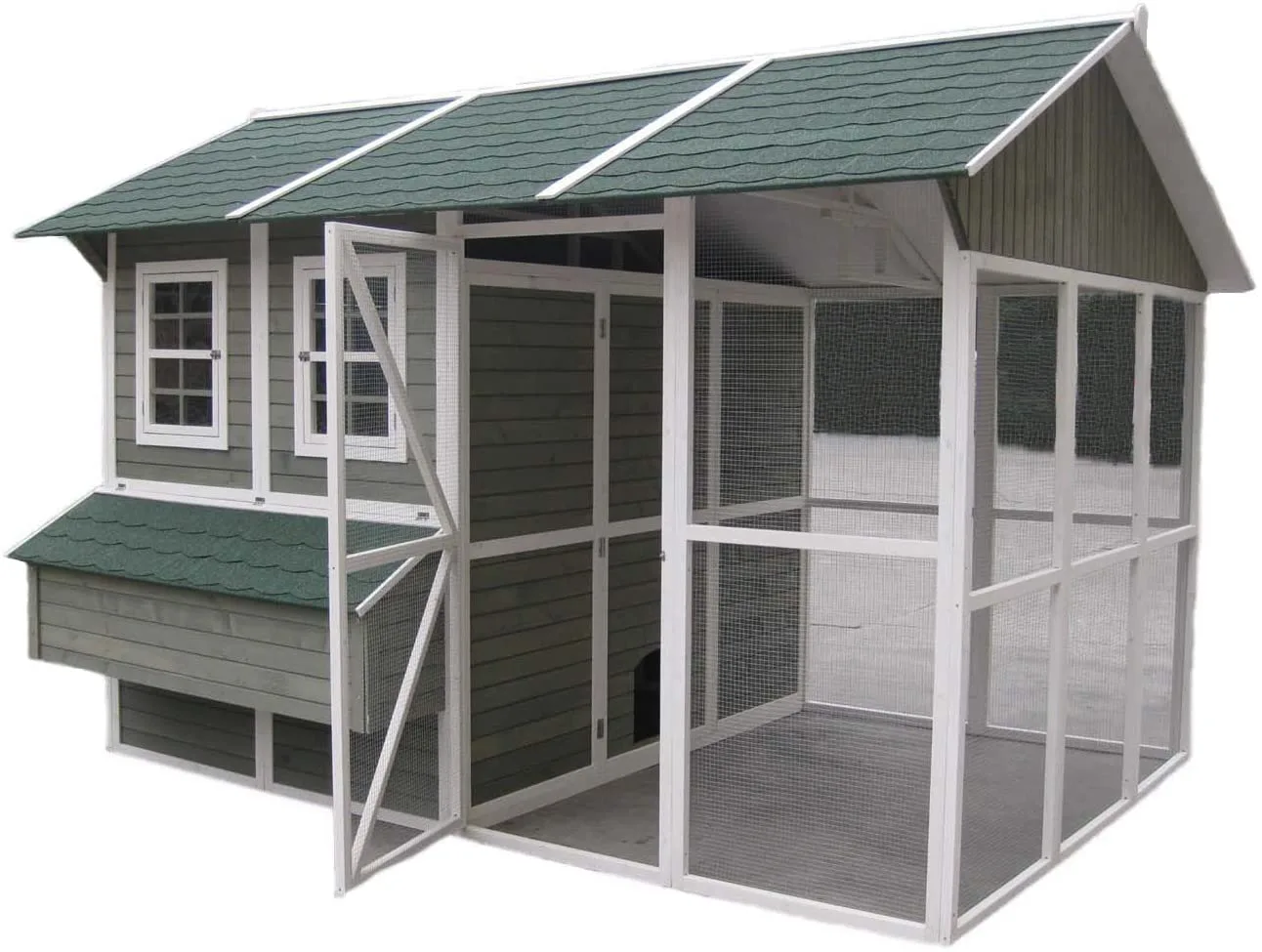If you’ve decided to start raising your first flock of backyard chickens, get excited!
- Chickens are wonderful pets.
- They’re one of the most manageable livestock animals.
- In addition to raising chickens for eggs, they offer many benefits.
But, in order to reap the benefits and raise a happy flock, there are some important steps to take both before and after taking your birds home.
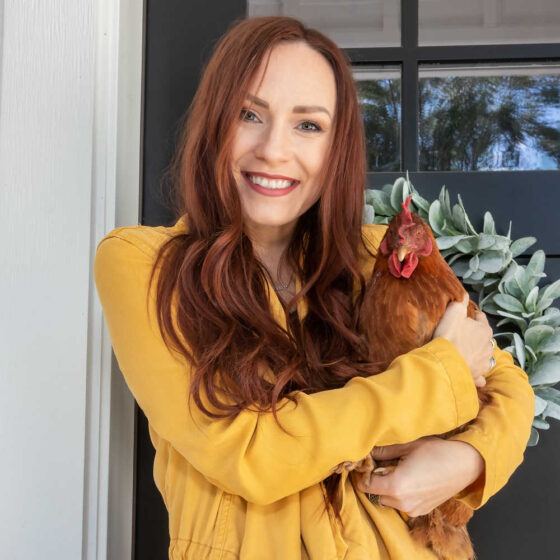
I’ve been raising chickens for over 20 years. I’ve put together this comprehensive guide to help you prepare and care for your new backyard chickens!
My goal is to answer some of the most common questions that new chicken owners have.
What To Know Before Buying Chickens
One of the best things about raising backyard chickens is that the experience is different for every single chicken keeper — based on their own personal needs and goals.
The first step in raising chickens, and in satisfying your needs or goals, is purchasing them.
Before buying your chickens, you need to be familiar with local regulations and rules. Some communities don’t have any restrictions for chicken keeping, but others may have requirements that you’d never have considered. For example, they may:
- Require permits
- Request signatures from your neighbors
- Limit the number of chickens you can own.
If you’ve researched your community’s policies and restrictions and found no conflicts, you can then move forward with purchasing your chickens.
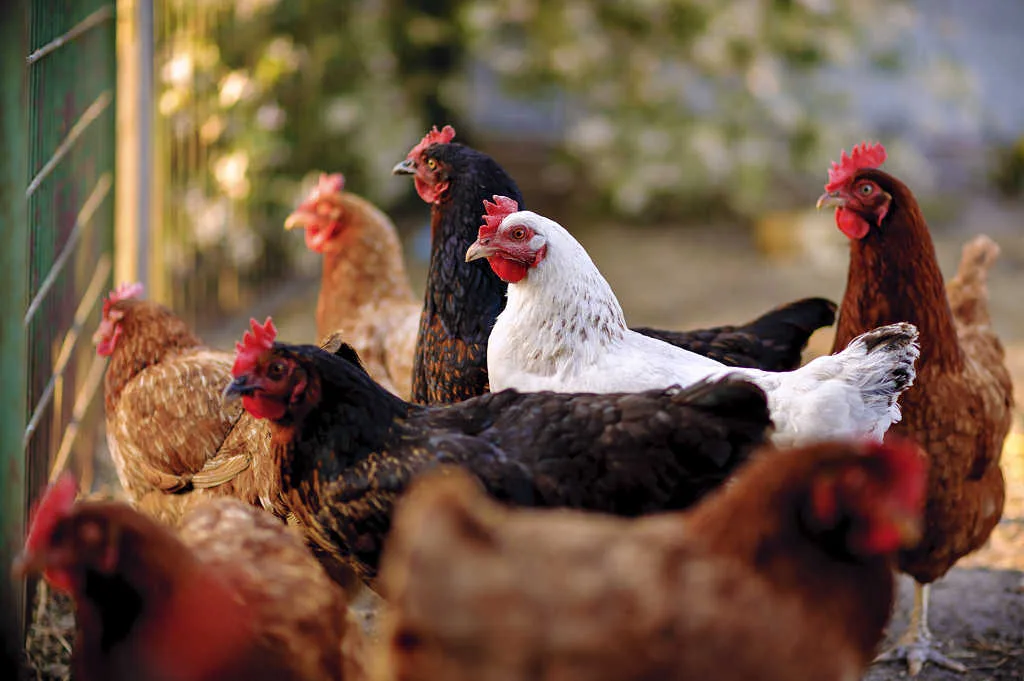
How Many Chickens Should You Buy?
The number of chickens you buy depends on how much space you are able to set aside for them.
Each standard chicken will need 4 square feet of space in the coop and 8 square feet in the pen/run. If you’re raising Bantams you will need slightly less space, and for other breeds you will need slightly more space.
After determining how much space you have, you may want to also consider egg production in determining how many chickens to buy:
- If you don’t want many eggs, then you may want to limit the amount of hens you have.
- If you want dozens of eggs but don’t have enough space, then you may need to adjust your goals to align with your space restrictions (or vice versa).
To determine how many chickens you will need to reach your production goals, you can use this Egg Laying Chickens Calculator. It shows you how many eggs per week a standard chicken will produce. (Just keep in mind that certain breeds will deviate from the average.)
How Old Should The Chickens Be?
Chickens can be purchased as chicks, pullets, or full-grown hens.
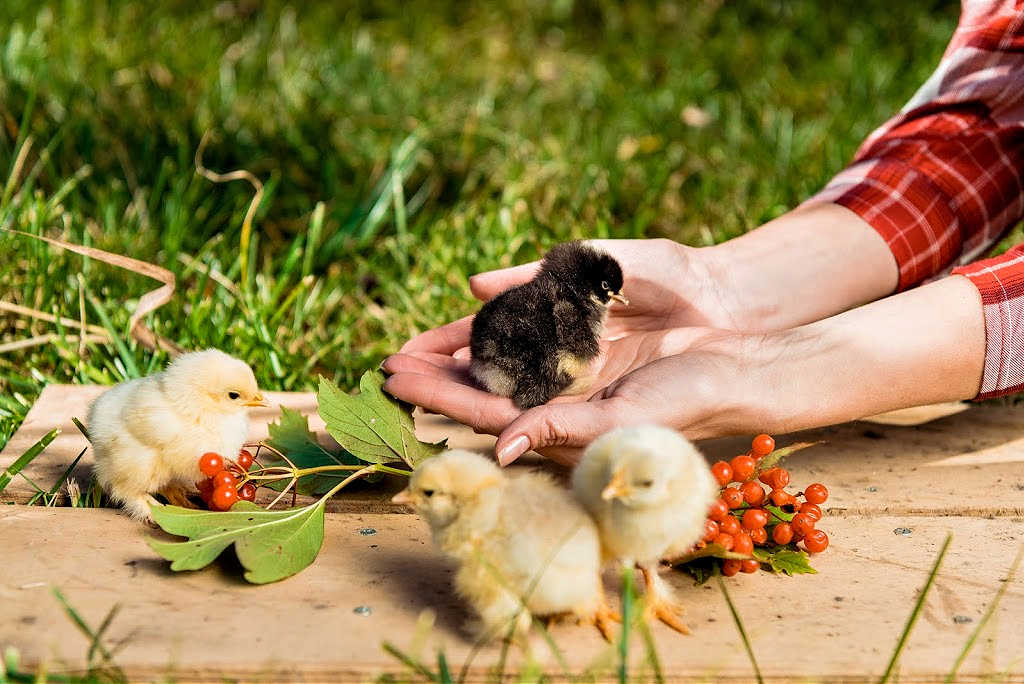
Buying chicks may seem like the obvious choice at first — after all, fluffy baby chicks are so adorable! However, when it comes to rearing chickens, the Huffington Post reminds us that “the first few months are the most time- and labor-intensive,” particularly for the first 4 weeks.
This is because chicks require closer observation and some extra equipment:
- During the first week they must be kept in 90 degree heat while they develop their feathers — the temperature can be lowered 5 degrees each week until it reaches 65 degrees.
- You will have to purchase a brooder box or another fixed heat source to keep the chicks warm.
- You’ll need different food for chicks too. They require 20-24% protein feed, compared to 16% for full-grown hens.
Chicks become pullets after about 8 weeks. Here’s what you need to know:
- Pullets require less labor on your part.
- They will be a bit more expensive.
- Pullets won’t be ready to lay eggs. (Chickens don’t start laying eggs until they’re 16 to 24 weeks old.)
As for hens:
- Hens may not be available for purchase until fall, when farmers are thinning their flocks after a season of laying.
Those are the most important things you will need to consider when deciding whether to buy chicks, pullets, or hens.
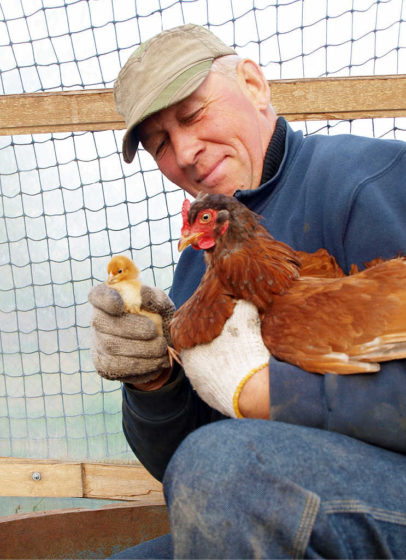
What Breed Of Chickens Should You Buy?
Before choosing a breed, remind yourself of your goals:
- Do you want eggs, poultry, showbiz or just a loving pet?
- Do they have calm or skittish temperaments?
- Will noisier chickens bother your neighbors?
- Do you live in a harsher climate?
The answer to each of these questions will be critical in determining which breed of chickens to purchase.
Here are some breed recommendations from Michigan State University:
- Docile chicken breeds that will get along better with other pets include Australorps, Barnevelders, Delawares, Dorkings Turkens, and Orpingtons.
- Some of the best egg layers are Anconas, Barnevelders, Chanteclers, Leghorns, Rhode Island Reds, and Jersey Giants.
- Chicken breeds that make good pets and will tolerate handling are Silkies, Dorkings, Sussexes, and Plymouth Rocks.
- Climate-hardy chicken breeds include Anconas, Brahmas, Delawares, New Hampshires, and Sussexes.
While this is not an exhaustive list, it’s a good start for new chicken owners who are just becoming familiar with chicken breeds.
Housing And Equipment Required For Backyard Chickens
Now that you’ve thought about which chickens to buy, you need to determine what housing and equipment you will need. Some key investments will be coops and runs, feeders and waterers, nesting boxes, and proper lighting sources.
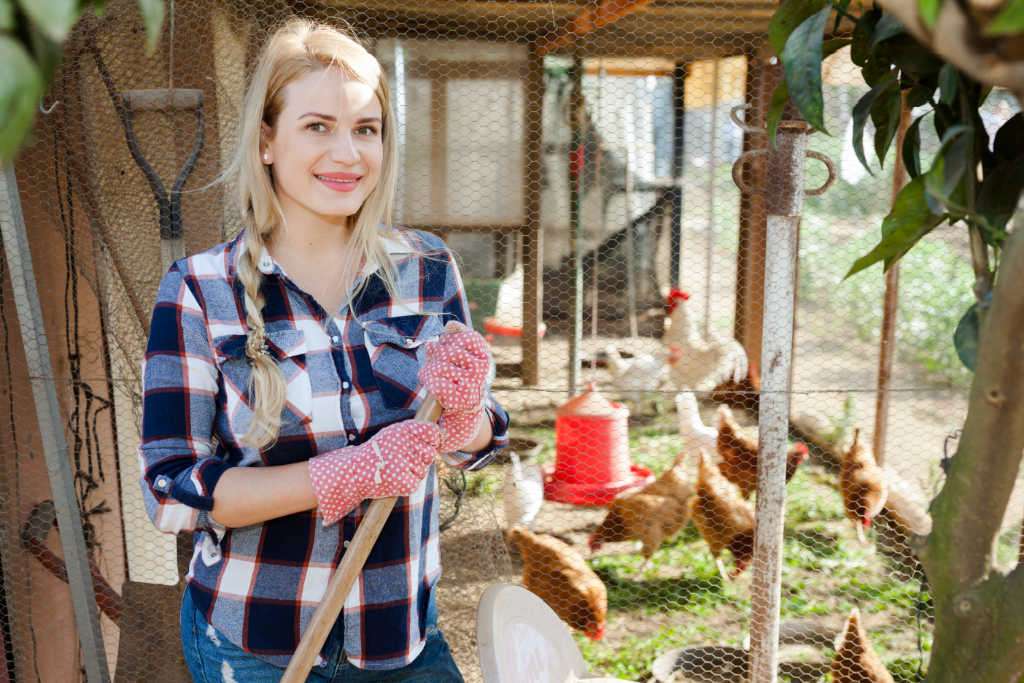
Coops and Runs
As mentioned above, each standard chicken needs 4 square feet in the coop and 8 in the run — that’s 12 square feet per chicken. Consider this when building or buying your chicken coop setup.
Additionally, University of Tennessee suggests that chicken coops must have:
- Draft-free ventilation
- Roosting spots
- Nesting boxes
- Protection from weather and pests
In terms of appearance, your chicken coops can be stylized however you want!
Feeders and Waterers
All animals eat, so it’s no surprise that your chickens will need feeders and waterers.
Chicken feeders can take many shapes and forms, as long as they:
- Are designed to avoid feed waste
- Have 2 to 3 inches of space per bird (That way everyone can have their fair share!)
Some options for backyard chicken coop feeders include wall mounted, hanging, and trough feeders. You can also find automatic feeders, in case you’re unable to consistently feed your flock at the same time each day.
When selecting the feeder, keep in mind the different space and food needs of growing chickens. For example, trough feeders cannot be adjusted as well to growing flocks.
Waterers are just as important as feeders:
- You need to have one waterer per 8 hens. (Chickens typically drink one pint per day. If it’s hot outside, count on 2 pints.)
- The water must be kept fresh. (The best way to do this is to get a drinker or poultry fountain.)
- There should be 2 to 3 inches of space at the waterer per bird. (And be careful not to place them too high!)
Nesting Boxes
Nesting boxes are essential for egg production.
They can be made or purchased, and are quite inexpensive.
You need one nesting box per 3 hens.
Lighting
Hens can produce with a combination of natural and artificial light — the artificial light is particularly important in the winter.
University of Maryland suggests these lighting tips for your coop:
- Hens need 14 to 16 hours of light each day for egg production. (Consider this when the days are shorter in the winter, and adjust the amount of artificial light accordingly.)
- A single, 25-watt incandescent bulb lights 40 square feet of floor space.
- A 40-watt incandescent bulb lights 200 square feet.
- You can set your chicken coop lights on timers to make things easier!
Miscellaneous
There are a few other purchases you will have to make to prepare for your flock, including:
- Perches — which can be as simple as a wooden 2×4.
- Maintenance supplies — which may include extra bedding, work gloves, a shovel, etc.
Tips For Feeding Backyard Chickens

As chickens grow and develop, they will be transitioned from starter feed, to grower feed, to developer feed, and finally to layer feed.
Generally speaking:
- Fully-grown chickens need 16% layer feed.
- Laying hens need 18% layer feed to support production.
University of Tennessee suggests that you give laying hens one-third pound of feed every day. You could also add supplements (such as calcium supplements) to support your flock’s health and production.
Chickens can also be given treats, scratch grains, or table scraps — but not too many! Too many can make them fat or hurt their digestion.
Egg Laying Tips
It’s so exciting once your chickens start laying their first eggs!
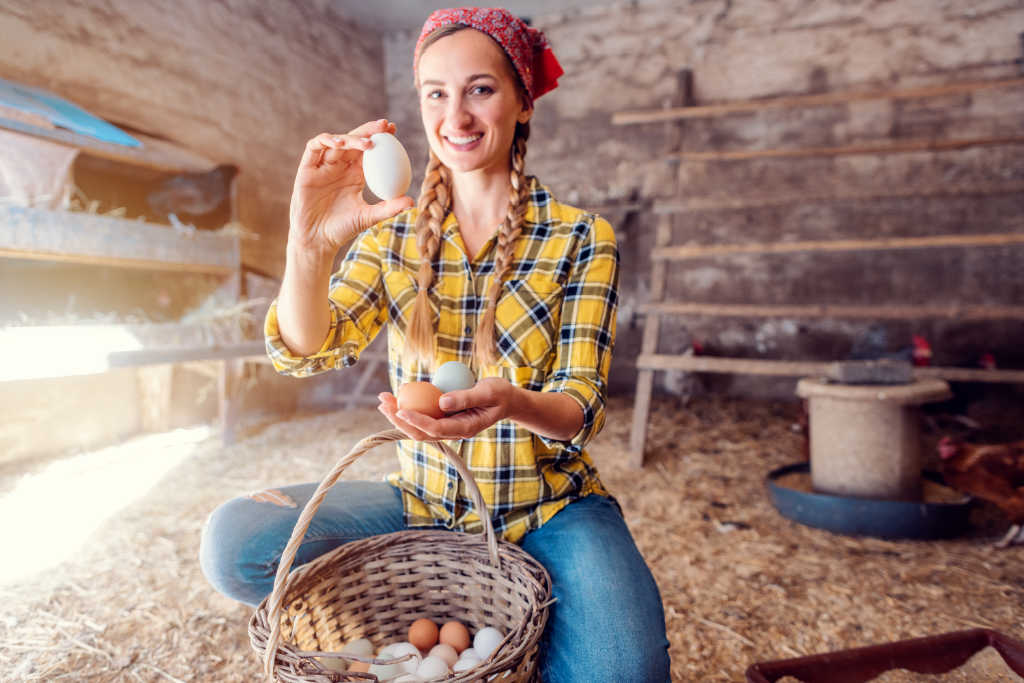
Just don’t be alarmed if the eggs aren’t quite what you were expecting at first. This is because it takes time for their bodies to adjust to egg laying.
It won’t be too long before everything is working normally, and the eggs are the size and shape that you’re used to seeing.
TIP: If you frequently see that your hens are laying soft shells, this means the hens aren’t getting sufficient calcium in their diets to form the shells. You can add calcium by feeding them oyster shells.
Backyard Chicken Health & Wellness
Chickens are not immune to illness. It can be scary dealing with a sick or infected chicken for the first time, but know that most common ailments are very treatable.
Be sure to:
- Regularly check your flock’s feathers for external signs of parasites.
- Keep an eye on their droppings, checking for anything abnormal.
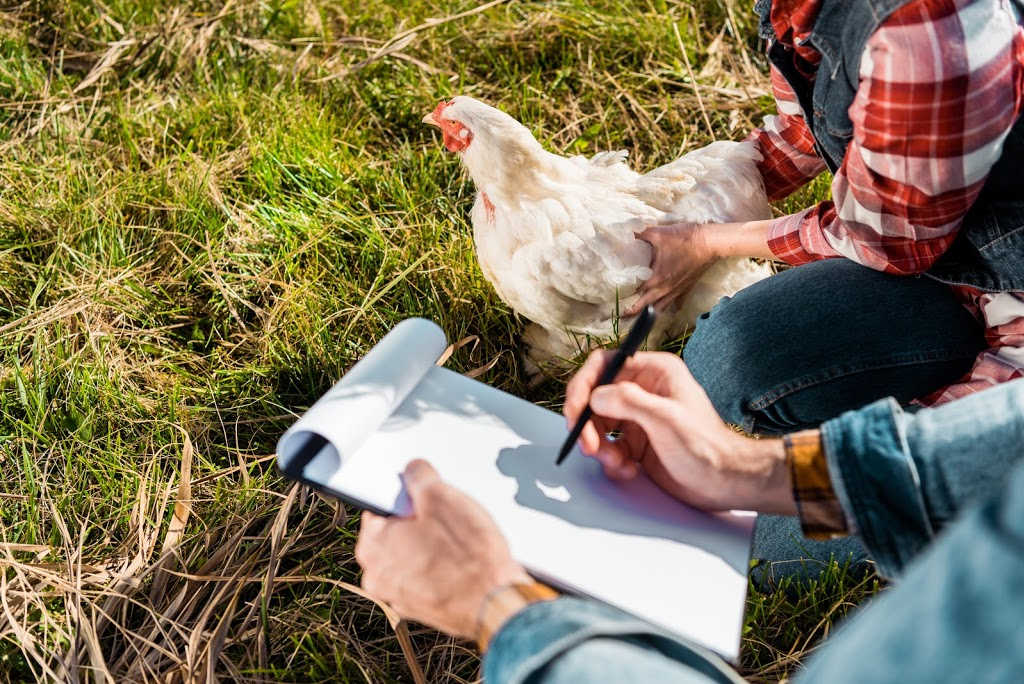
Here are some things you may see if your bird has:
- Internal parasites – Worms in the stool, loose stool, or bloody stool
- External parasites – Skin irritation, feather loss, scabs, or constant scratching
- Respiratory illness – Watery eyes, nasal discharge, swollen eyes, or open-mouth breathing
- Intestinal disease – Pooping less frequently or abnormal stool, eating and drinking less, dehydration
- Coccidia – Bloody stool
- Brain diseases – Inability to stand or walk, lack of coordination
Some of these illnesses are treatable at home with antibiotics, or even essential oils for internal parasites.
If you’re ever unsure of how to treat them, however, consult a veterinarian. Just don’t wait too long — chickens are sociable, so they will spread diseases amongst themselves very quickly! As soon as one chicken is exhibiting signs of illness, separate her from the rest of the flock and inspect all of the other birds to be safe.
The Bottom Line
There are many general standards for new chicken owners caring for a flock of chickens, but there are also many ways that you can make the experience your own.
You get to set your own goals, choose your own birds, and raise them for any purpose you want — it’s all up to you!
Hopefully after reading this guide, you can meet those goals with ease, and have fun doing it.
Like this post? Save it to read again later… or share with others on Pinterest!
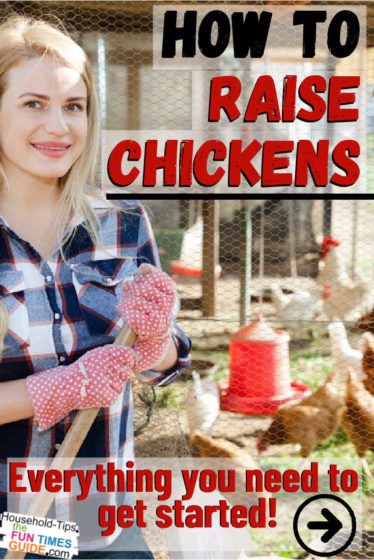
Chris is a 4th generation chicken keeper who has been raising chickens for over 20 years! She likes to share her knowledge on raising healthy, happy chickens with others.
I like to help people find unique ways to do things that will save time & money — so I write about “outside the box” Household Tips and Life Hacks that most wouldn’t think of. I’m super-organized. And I LOVE to clean! I even enjoy doing laundry (but not ironing). I’m also a lifelong dog owner — so I often share my favorite tips for living with dogs inside your home (like smart home design choices and dog-friendly cleaning & decorating ideas). Career-wise, I’ve been sharing my best ideas with others by blogging full-time since 1998 (the same year that Google started… and before the days of Facebook and YouTube). Prior to that, I worked in Higher Ed over 10 years before switching gears to pursue activities that I’m truly passionate about instead. For example, I’ve worked at a vet, in a photo lab, and at a zoo — to name a few. I enjoy the outdoors via bicycle, motorcycle, Jeep, or RV. When I’m not cleaning, organizing, decorating, or fixing something… you’ll find me at the corner of Good News & Fun Times as publisher of The Fun Times Guide (32 fun & helpful websites). To date, I’ve personally written over 200 articles about cleaning, organization, DIY repairs, and household hacks on this site! A few have over 2M shares; many others have over 100K shares.

